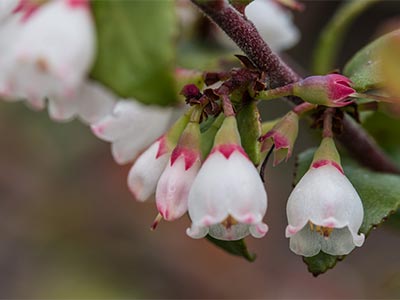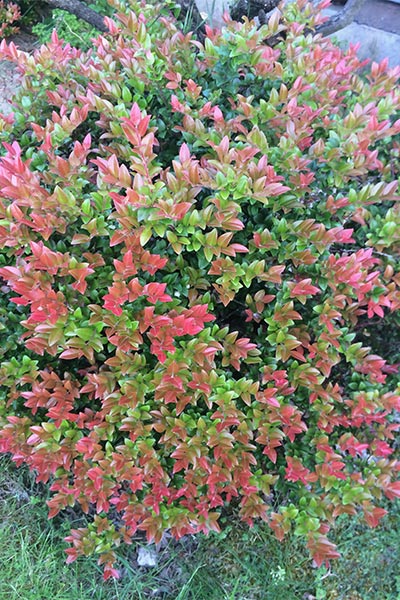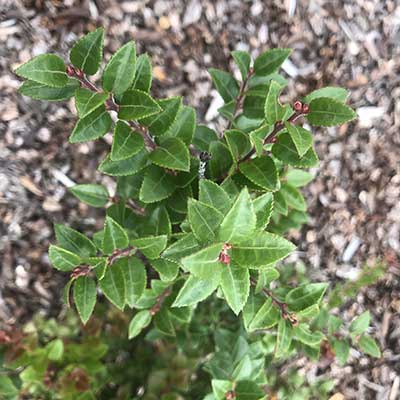Evergreen Huckleberry
- Scientific Name: Vaccinium ovatum
- Garden: Edibles and Herbs Garden
- Plant Type: Shrub
- Evergreen/Deciduous: Evergreen
- Sun/Shade Exposure: Part Shade
- Moisture Requirements: Moist, Well-Drained
Plant Information
Evergreen Huckleberry is a prized addition to any Northwest native landscape with its little urn-shaped flowers, perennial leaves and glossy, blackish-purple berries. Morphology: An upright, evergreen, broad-leaved shrub that typically grows 2’-3’ tall in the sun but up to 10’ in height if grown in full shade. Mature plants in shaded locations can spread 10’ wide, especially if the site is moist. Leaves are perennial, alternately arranged (distinctly 2-ranked), simple, and ovate in shape. Depending on the vigor of the plant, leaves can be ½” to 1.5” in length. They have a leathery feel and serrated edges. As for color, the new leaves are bronze to red while the mature leaves are green and glossy during the summer. Floral shops use the leafy branches in mixes with herbaceous bouquets. Pale pink, urn-shaped flowers appear in the spring. During the summer flowers morph into red berries which later turn the characteristic dark purple color. The fruit can be consumed fresh or used for jams and preserves. Songbirds soon find the plants and will consume the berries as well. Adaptation: This species requires moist, acidic soil and can thrive where pH ranges from 4.3 to 5.2. It can tolerate both sun and shade though it prefers more of the latter. Commonly found in association with coniferous forests all along the west coast of the United States. Pests: None reported.
Data Source
https://www.pnwplants.wsu.eduPlant Photos







